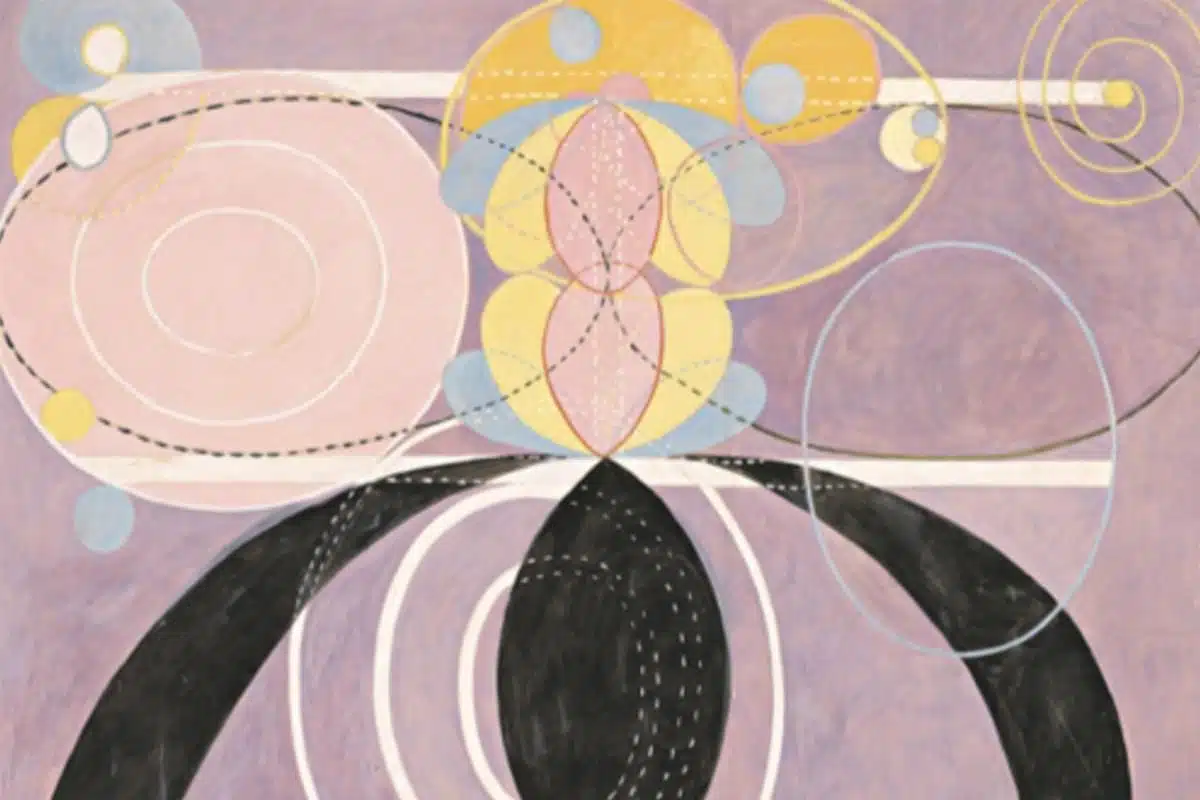In this significant collection of essays and illustrations, curator Milena Høgsberg marvels at the reception to Hilma af Klint’s work at the 2020 exhibition at Moderna Museet, Malmö, Sweden. The question of af Klint’s growing popularity is at the heart of the essays included in this book, which also functions as an exhibition catalog. Af Klint was a complex artist. In addition to being a painter, she was also deeply devoted to science and nature as well as a lifelong practitioner of spiritualism. She studied drawing and painting in her native Sweden at the end of the 1800s and began her work as an abstract painter in 1906, following an intense spiritual practice.
The exhibition catalog provides an opportunity for many to learn about the life and creative work of Hilma af Klint. This is especially the case in the United States, where there has only been one solo exhibition of her work in this century, at the
Guggenheim in 2018-2019. The Hilma af Klint Foundation in Stockholm holds more than 1,300 artworks and 125 notebooks, many of which have not yet been part of museum exhibitions.
Not only was it difficult for female artists at the turn of the 20th century to have their work taken seriously, af Klint also complicated the exhibition potential of her painting by mandating that her abstract work would not be viewed by the public until 20 years after her death. Af Klint believed that time must pass before the public would have the spiritual understanding needed to fully understand her paintings. This seems appropriate, considering the growing consensus that her work feels as if it belongs in the 21st century.
Hilma af Klint: Artist, Researcher, Medium includes 288 illustrations, primarily high-quality reproductions of af Klint’s paintings, expertly selected and rendered to highlight her use of color and shape to portray her ideas of the convergence of interior and exterior space. Influenced by the spiritual and occult movements of her time, af Klint wanted to depict the connections beyond the visible world and our interior worlds. Unlike some of her male counterparts, af Klint used abstraction not for its own sake but rather to give shape to the things we cannot see. Indeed, the spiritual impact on her art practice is tremendous: af Klint said that much of the imagery in her paintings came to her as if she were a medium, receiving messages through a spiritual connection.
Af Klint embraced theosophy and its intent of exploring occult phenomena by uniting spirituality and science. We see this reflected in her use of colors, shapes, and symbols that work toward balance and unity between polarities of male and female, as well as light and dark. Her vivid use of color, both complementary and contrasting, warrants contemplation.
Much of what she envisioned and translated to the paintings was channeled through her decades-long spiritual practice. In her essay in the collection, “Hilma af Klint and The Five: The Time of Preparation”, researcher Hedvig Martin notes that af Klint always had spiritual inclinations, seeing apparitions as a child and having premonitions and visions as an adult. As part of The Five–a group formed with four other women artists–af Klint participated in seances and practiced automatic drawing, channeling a spiritual being called Amaliel. From their meetings between 1896 and 1907, The Five produced nearly 2,000 pages of notes detailing their experiences and reflecting on the cosmic task they felt was their mission.
No spiritual knowledge or inclination is needed to appreciate af Klint’s work. There’s clearly nothing random about her arrangements of androgynous figures, spirals, and binaries, yet her work is powerfully communicative. Many of her paintings feel mysterious, but not devoid of meaning. This is especially the case with the most significant work, The Paintings for the Temple, 193 paintings and drawings which af Klint created between 1906 and 1915. Among that series are The Ten Largest, averaging seven- to ten-feet of vibrant, hypnotic paintings that were featured in the Moderna Museet exhibition and in the catalog as well.
In her essay that is also the title for the book, editor Iris Müller-Westermann writes about af Kilnt’s extensive writing about her art and meticulous conversion of her spiritual insight into the abstract worlds of her painting. “Symbols are like doors to other dimensions,” Müller-Westermann notes, summarizing the way that af Klint was simultaneously artist, researcher, and medium.


